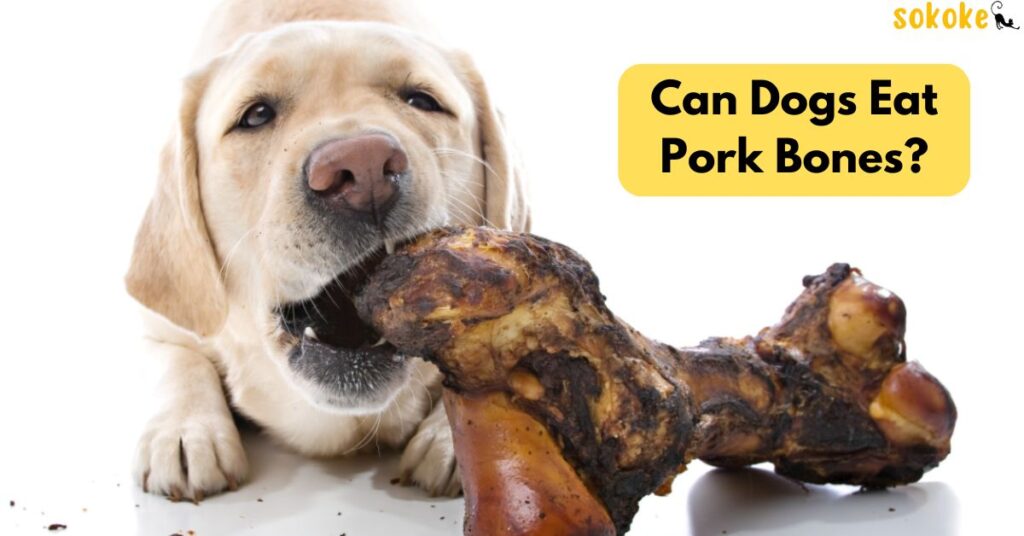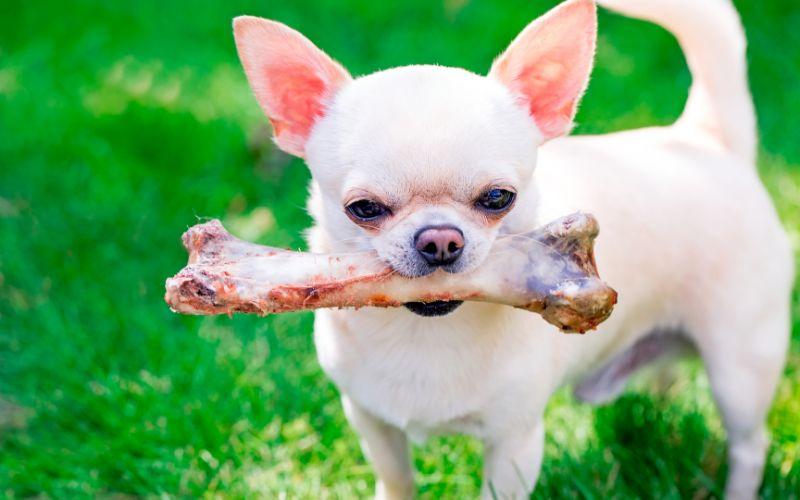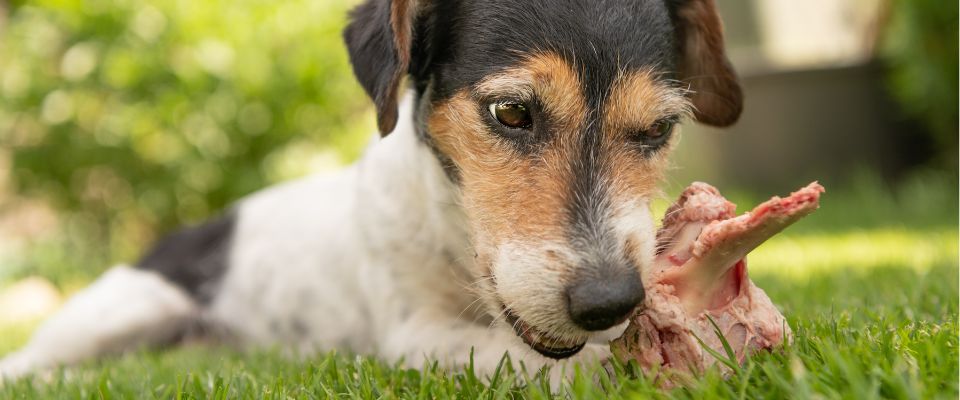
There is a common question among pet owners, “Can dogs eat pork bones?” This question sparks a debate among pet enthusiasts, veterinarians, and experts alike. Understanding the safety considerations, risks, and alternatives is crucial for responsible pet ownership. In this comprehensive guide, we delve into the topic of dogs and pork bones, exploring safe chewing practices, healthy alternatives, and essential tips for ensuring your dog’s well-being during chew sessions. Let’s navigate the world of canine chewing habits and make informed decisions for our beloved companions.
Table of Contents
Are Bones Good For Dogs?
Bones have been a topic of discussion among pet owners for their potential benefits and risks for dogs. Let’s delve deeper into whether bones are truly good for dogs.
Benefits of Bones for Dogs:
| Benefit | Explanation |
| Dental Health Improvement | Chewing on bones can help remove plaque and tartar from dogs’ teeth, promoting better dental hygiene and reducing the risk of dental problems. |
| Mental Stimulation | Gnawing on bones provides dogs with mental stimulation and helps alleviate boredom, especially for breeds known for their chewing instincts. |
| Nutritional Value | Bones can be a natural source of minerals like calcium and phosphorus, which are essential for bone health and overall well-being in dogs. |
Risks and Considerations:
| Risk/Consideration | Explanation |
| Choking Hazard | Small bones or bone fragments can pose a choking risk, especially for dogs that gulp down their food without chewing thoroughly |
| Dental Damage | Hard bones, particularly weight-bearing bones, can cause dental fractures or damage if dogs chew too aggressively or if the bones are too dense. |
| Digestive Issues | Ingesting large pieces of bone can lead to digestive issues such as blockages or perforations in the gastrointestinal tract, which may require surgical intervention. |
| Bacterial Contamination | Raw bones can carry bacteria like Salmonella or E. coli, which can be harmful to dogs and humans if not handled and stored properly. Cooked bones, while less likely to splinter, can still harbor bacteria if not cooked thoroughly. |
It’s crucial to weigh the potential benefits against the risks and make informed decisions about offering bones to dogs.
Can Dogs Eat Pork Bones?
The question of whether dogs can safely consume pork bones is a common one among pet owners. Let’s explore this topic in more detail to provide a comprehensive understanding.

Factors to Consider:
When assessing the safety of feeding pork bones to dogs, consider the following factors:
Bone Type: Different types of bones have varying densities and structures, affecting their safety for dogs. For example, weight-bearing bones are denser and more likely to splinter compared to softer bones.
Preparation: Whether the bones are raw or cooked can impact their safety. Raw bones are generally safer as they are less likely to splinter, while cooked bones can become brittle and pose choking or digestive hazards.
Size and Chewing Habits: A dog’s size, age, and chewing habits play a role in determining the appropriateness of bones. Large, aggressive chewers may handle bones better than small dogs or those prone to swallowing without chewing.
Individual Health Considerations: Consider any existing health conditions your dog may have, such as dental issues or digestive sensitivities, that could influence their ability to safely consume bones.
Common Misconceptions:
There are several misconceptions surrounding the topic of dogs and pork bones. Let’s address some of these:
Myth: All Bones Are Safe: Not all bones are safe for dogs. Some bones, especially those that are small, cooked, or from certain animals, can pose serious risks.
Myth: Cooked Bones Are Safer: While cooked bones may seem less likely to splinter, they can actually become brittle and shard-like, causing injuries internally.
Myth: All Dogs Can Handle Bones: Each dog is different, and some may not handle bones well due to their size, age, or health conditions.
Kinds of Pork Bones Are Safe for Dogs?
Not all pork bones are created equal when it comes to safety for dogs. Let’s explore which types of pork bones are generally considered safe and appropriate for canine consumption.
Safe Pork Bone Types:
| Type of Pork Bone | Safety Considerations |
| Raw, Uncooked Bones | Raw bones are softer and less likely to splinter, reducing the risk of choking or internal injuries. |
| Large, Sturdy Bones | Opt for large bones that are too big for your dog to swallow whole, minimizing the risk of choking or intestinal blockages. |
| Fresh Bones from Reputable Sources | Choose bones from reputable sources to ensure they are free from harmful additives, contaminants, or bacterial contamination. |
Unsafe Pork Bone Types:
| Type of Unsafe Pork Bone | Risks |
| Cooked Bones | Cooked bones are more likely to splinter and break into sharp fragments, posing a choking hazard or internal injuries to dogs. |
| Small or Thin Bones | Small bones, such as rib bones, can easily splinter or break into smaller pieces, increasing the risk of choking or digestive issues. |
| Bones with Sharp Edges | Bones with sharp edges or pieces that can easily break off pose a risk of mouth or throat injuries if swallowed or chewed aggressively. |
When offering pork bones to your dog, prioritize safety by selecting the right type of bone and supervising their chewing to prevent accidents.
Dangers of Giving Rib Bones to Dogs

Rib bones are a common choice for dog treats, but they come with significant dangers:
Small Size: Rib bones are relatively small and can easily splinter or break into sharp fragments, posing choking or digestive hazards.
Thin and Flexible: The structure of rib bones makes them more likely to bend, snap, or splinter when chewed, increasing the risk of mouth or throat injuries.
Risk of Obstruction: Dogs may swallow rib bone pieces whole or in large chunks, leading to gastrointestinal obstructions or blockages.
What are Healthy Alternatives to Pork Bones?
While pork bones may pose risks to dogs, there are numerous healthy alternatives that provide similar benefits without the potential hazards. Let’s explore some of these alternatives in detail:
1. Raw Meaty Bones:
Raw meaty bones, such as raw chicken necks or beef marrow bones, can be a safer alternative to cooked bones:
Nutritious: Raw bones are rich in essential nutrients like calcium and phosphorus, promoting dental health and overall well-being.
Less Likely to Splinter: Raw bones are softer and less likely to splinter or break into sharp fragments, reducing the risk of choking or internal injuries.
Mental Stimulation: Chewing on raw bones provides dogs with mental stimulation and helps satisfy their natural chewing instincts.
2. Edible Dental Chews:
Specifically designed edible dental chews offer dental benefits without the risks associated with bones:
Dental Health: Edible dental chews help remove plaque and tartar, promoting healthier teeth and gums.
Safe and Digestible: Edible chews are designed to be easily digestible and pose minimal choking or digestive hazards.
Variety of Options: There are various brands and types of edible dental chews available, catering to different sizes and chewing habits of dogs.
3. Rubber or Nylon Chew Toys:
Durable rubber or nylon chew toys provide hours of entertainment and chewing satisfaction for dogs:
Long-lasting: Rubber or nylon toys are designed to withstand heavy chewing and last longer than traditional bones.
Safe and Non-splintering: These toys are non-splintering and pose minimal risks of choking or dental damage.
Interactive Features: Many chew toys come with interactive features like treat dispensers or textures that add to the chewing experience.
4. Rawhide Alternatives:
Natural rawhide alternatives offer a chewy texture without the potential risks associated with traditional rawhide:
Chewy Texture: Rawhide alternatives provide dogs with a satisfying chewing experience that helps alleviate boredom.
Digestible Ingredients: Quality rawhide alternatives are made from digestible ingredients and pose minimal digestive risks.
Size Options: Rawhide alternatives come in various sizes and shapes to suit different dog breeds and preferences.
By offering these healthy alternatives, pet owners can ensure their dogs enjoy safe and enjoyable chewing experiences without compromising their health.
Conclusion: Can Dogs Eat Pork Bones?
While dogs may enjoy chewing on bones, including pork bones, it’s important for pet owners to prioritize their safety and well-being. The question of “can dogs eat pork bones” highlights the need for informed decision-making. Choose safe alternatives, supervise chew sessions, and consult with a veterinarian for personalized recommendations based on your dog’s needs and health status.
By making informed choices and providing safe alternatives, pet owners can ensure their dogs enjoy satisfying chew experiences without compromising their health.
Key Takeaways:
Safety First: The safety of pork bones for dogs depends on factors such as type, preparation, and individual health considerations. Raw, uncooked bones from reputable sources are generally safer than cooked or weight-bearing bones.
Risks and Dangers: Certain types of pork bones, such as cooked, small, or sharp-edged bones, pose significant risks including choking, dental damage, and digestive obstructions.
Healthy Alternatives: There are numerous healthy alternatives to pork bones that provide dental benefits, mental stimulation, and chewing satisfaction without the potential hazards.Supervision and Precautions: Regardless of the chew option chosen, it’s essential to supervise dogs during chew sessions, monitor chew time, and inspect chew toys regularly for safety.
Frequently Asked Questions (FAQs)
Q: Can dogs safely eat pork bones?
While some types of pork bones can be safe for dogs, such as raw, uncooked bones from reputable sources, others, like cooked or small bones, pose risks of choking, dental damage, and digestive issues. It’s crucial to choose safe alternatives and supervise chew sessions.
Q: Are there specific types of pork bones that are safer for dogs?
Raw, uncooked bones from pastured pigs and large, sturdy bones that are too big for dogs to swallow whole are generally safer options. Avoid cooked bones, small bones, and bones with sharp edges to minimize risks.
Q: What should I do if my dog accidentally eats a pork bone?
If your dog ingests a pork bone and shows signs of distress such as choking, vomiting, or lethargy, contact your veterinarian immediately. Avoid inducing vomiting without professional guidance and follow any instructions provided by your vet.
Q: Can puppies have pork bones?
Puppies should avoid consuming bones until they are older and have fully developed teeth and digestive systems. Offer soft, puppy-safe chew toys and treats instead to prevent choking or dental issues.
Q: Are there healthy alternatives to pork bones for dogs?
Yes, there are numerous healthy alternatives to pork bones that provide dental benefits, mental stimulation, and chewing satisfaction without the potential hazards. These include raw meaty bones, edible dental chews, rubber or nylon chew toys, and interactive puzzle toys.
